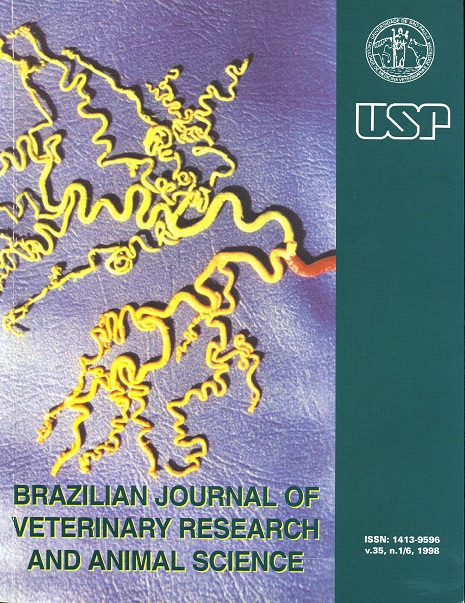Morphometric evaluation of nerve fibers after surgical repair by allograft and tubular prothesis of the ulnar nerve in dogs
DOI:
https://doi.org/10.1590/S1413-95961998000200006Keywords:
Morphometry, Peripheral nerves, Neurosurgery, DogsAbstract
The purpose of this study was to evaluate, by morphometric analysis, the regenerated nerve fibers of dogs, after 26 weeks of observation, in gaps of the ulnar nerves substituted by allografts and tubular prosthesis of silicone. The ulnar nerves of four dogs were processed for electron microscopic evaluation. Six fields, with 1750 µm², for each dog and each procedure, were photographed at 1880x. A morphometric computer based analysis (Sigma Scan - Jandel Co., USA) resulted in the following numbers (average numbers in micrometers). 1. ulnar nerve with tubular prosthesis- a: myelinated fiber diameter-5.12 ± 1.67. b: myelinated axon diameter: 4.08 ± 1.52. c: myelin sheath thickness-0.52 ± 0.18. d: unmyelinated axon diameter: 0.98 ± 0.37. 2. ulnar nerve with allograft- a: myelinated fiber diameter: 6.04 ± 2.27. b: myelinated axon diameter: 4.59 ± 1.95. c: myelin sheath thickness: 0.72 ± 0.23. d: unmyelinated axon diameter: 0.96 ± 0.40. The morphometric analysis after 26 weeks of nerve repair didn’t show a significant difference between the two surgical procedures.Downloads
Download data is not yet available.
Downloads
Published
1998-01-01
Issue
Section
VETERINARY MEDICINE
License
The journal content is authorized under the Creative Commons BY-NC-SA license (summary of the license: https://
How to Cite
1.
Stopiglia Ângelo J, Lainetti RD, Pires RS, Da-Silva CF. Morphometric evaluation of nerve fibers after surgical repair by allograft and tubular prothesis of the ulnar nerve in dogs. Braz. J. Vet. Res. Anim. Sci. [Internet]. 1998 Jan. 1 [cited 2024 Apr. 18];35(2):80-3. Available from: https://www.revistas.usp.br/bjvras/article/view/5717





